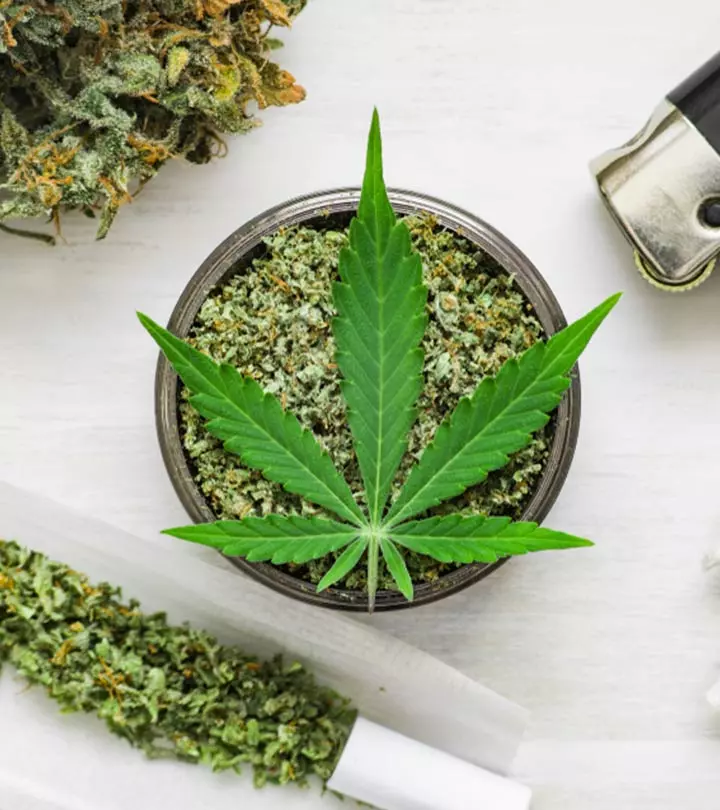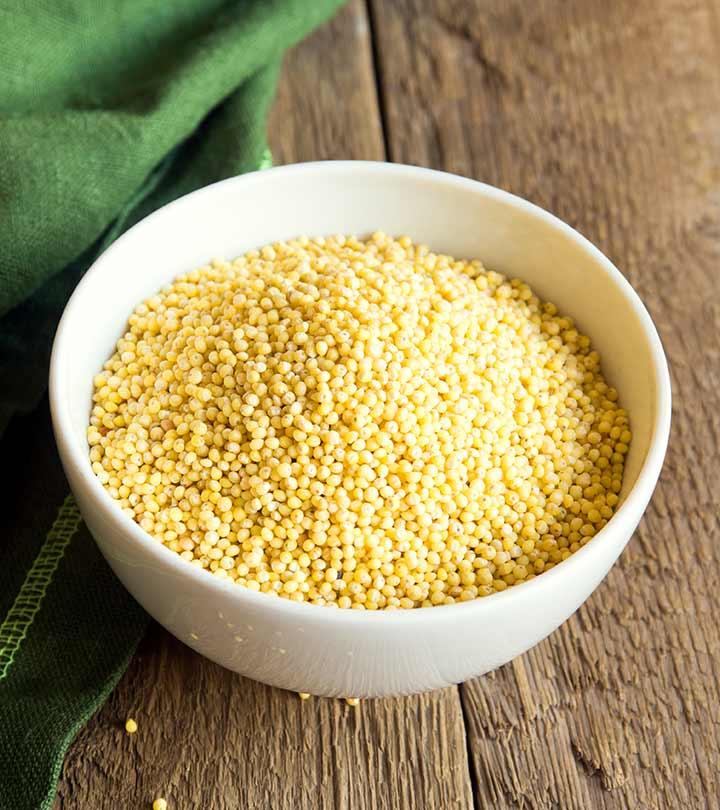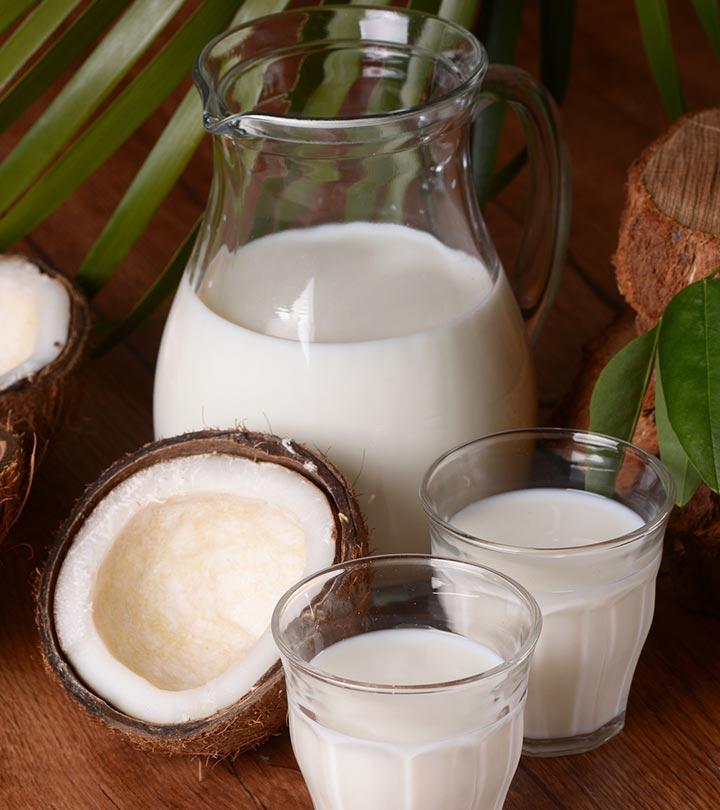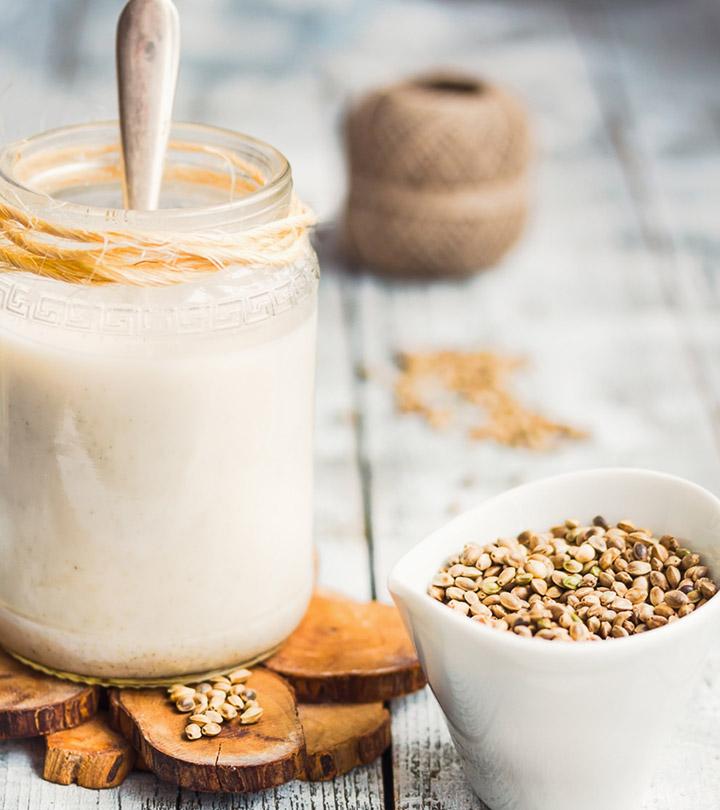Are You Aware Of The 3 Major Side Effects Of Oil Pulling? Find Them Here!
Know how this age-old Ayurvedic technique poses adverse effects and how to prevent them.

Image: Shutterstock
Oil pulling is an age-old Ayurvedic technique to maintain oral hygiene by swishing oil in the mouth for a few minutes. But the side effects of oil pulling have often put this procedure under a cloud, even though it has its share of benefits.
Why is the medical fraternity averse to this ancient technique? What side effects are doctors pointing to? In this article, we have brought to you certain side effects of swishing oil in your mouth and how to perform this technique correctly to avoid such risks. Take a peek!
In This Article
What Is Oil Pulling? How Does It Work?

Oil pulling is a powerful detoxification Ayurvedic technique. It has recently become popular as a complementary and alternative medical (CAM) remedy for different health ailments (1).
In this technique, you swish and gargle edible oil in your mouth for 5-10 minutes and spit it out.
Ayurveda suggests that oil pulling benefits extend beyond maintaining oral health. It is believed to be effective against 30 systemic diseases ranging from headache, sinus congestion, throat irritation, gingivitis, halitosis, migraine, gum inflammation, and diabetes to asthma. However, traditional medicinal practices can prove to be harmful. Though there are a few, these side effects can be life-threatening if left unnoticed (1).
Natacha, a blogger, explores the potentially less-than-pleasant side effects of oil pulling with coconut oil, sharing her own experience of a violent reaction that led to intense vomiting and dizziness. She highlights the need for careful consideration and awareness when trying health practices. She emphasizes, ” My personal decision is based on the fact that I’m not convinced it yields many of these ‘benefits’ I’ve read about. Most importantly, I’ve been observant and feel as great when I don’t oil pull as when I do–so then what’s the point of doing it (i)?”
Curious?
Read on to know the major side effects of oil pulling.
 Trivia
TriviaKey Takeaways
- Oil pulling is an ancient Ayurvedic practice where you swish and gargle edible oil for 10 minutes and spit it out.
- Lipid pneumonia, upset stomach, and heavy metal poisoning are a few side effects of oil pulling.
- Brushing and flossing regularly can help maintain proper oral hygiene.
- Individuals allergic to coconut or sesame oil should refrain from oil-pulling.
What Are The Side Effects Of Oil Pulling?
1. Lipoid Pneumonia

Lipoid pneumonia is caused by aspiration or inhalation of oily substances. It is a lung disease that could affect people who try oil pulling (2).
When you mistakenly swallow or inhale a large amount of swishing oil, it enters your air passages and lungs. Since this oil could be contaminated with oral pathogens and toxins, it might cause lipoid pneumonia.
Non-smokers (and also former smokers) who performed sesame oil pulling regularly complained of shortness of breath and dry cough. Doctors and researchers suggest that oil pulling can cause exogenous lipoid pneumonia when not done properly (2).
2. Stomach Upset And Nausea

This ancient technique might cause an upset stomach and diarrhea. Gargling and swishing large amounts of dense oils like coconut oil can make you feel nauseous and lead to dizziness. Swallowing these contaminated oils can mess with your stomach resulting in poor digestion (3), (4). Prolonged, improper digestion may lead to fatigue, dehydration, and weakened immunity. This may even wreak havoc on your skin health.
This is why a majority of healthcare providers believe oil pulling is not an effective technique. Brushing your teeth and flossing regularly remove more debris than oil pulling (3).
3. Heavy Metal Poisoning
Most of the Ayurvedic medicines have achieved incredible results. Traditional and herbal medicine is potent and safe. But certain Ayurvedic preparations have been reported to have traces of heavy metals.
Lead, mercury, and arsenic intoxication are often associated with the use of Ayurvedic herbal medicine product (HMPs) (1), (5).
Users of Ayurvedic medicine may be at risk for heavy metal toxicity. Researchers at the Harvard Medical School recommend heavy metal testing to be made mandatory for all Ayurvedic products.
Since oil pulling has its origin in this traditional medicine, the products used in the technique may possess heavy metal traces (1), (5).
However, Ayurveda practitioners assure complete safety. According to them, only after due traditional purification process is strictly followed is an herbal medicinal product put to use (1).
These effects sound scary. But why does this procedure have a huge fan base?
Probably because there are ways of avoiding these side effects. Check the next section for more information.
How To Avoid The Side Effects Of Oil Pulling

Many of the side effects of oil pulling are caused because of practicing the technique the wrong way. This could be one of the better ways of performing oil pulling:
- Brush your teeth normally after waking up to remove plaque buildup. Make sure you clean your tongue and rinse your mouth properly.
- Take 10 ml of sesame or coconut or sunflower oil and raise your chin marginally. This will cause the oil to spread around the inside of your mouth.
- Use your tongue to apply the oil to the gaps between your teeth, gums, and palate.
- Move your jaws in a chewing motion.
- Continue the process for about 5-10 minutes.
- You will notice the oil becoming more watery. You need to spit out the oil at this point.
- Do not swallow this oil. If you did in small amounts, it would get washed off in urine and stools. But if it is in large amounts, see a doctor at the earliest.
- Rinse your mouth thoroughly with tap water.
- Wait for 15- 20 minutes before you eat or drink anything.
 Quick Tip
Quick TipHere comes the crucial part. These are the precautions you need to keep in mind:
- Children under the age of 5 should not be allowed to perform oil pulling.
- If you are allergic to sesame, coconut, sunflower, or any oil that’s being used, or a particular brand of oil, pick another type. If not, refrain from practicing this technique.
- Lastly, if the oil does not turn thin and white, you might not be performing oil pulling correctly.
The best way is to perform this exercise under an experienced practitioner. Do it under medical guidance until the healthcare provider approves your technique.
People usually practice oil pulling to maintain their oral health. But can it help you get rid of cavities? Let us find out.
Does Oil Pulling Help You Get Rid Of Cavities?
Research suggests that oil pulling may help remove plaque-building germs responsible for dental caries (6). However, there are currently no studies that suggest it can help you get rid of cavities that are caused by the breakdown of tooth enamel. While oil pulling may help reduce bad breath and the bacterial load in your mouth, it is not a substitute for dental procedures and oral practices like regular brushing and flossing. If you have a cavity, visit your dentist to get it filled.
Infographic: Major Side Effects Of Oil Pulling
Oil pulling is an ancient way of cleaning your teeth. In addition, this process has a multitude of benefits. However, swallowing the oil, which contains bacteria and toxins, may lead to several adverse effects. Click on the infographic below to learn what are the major side effects of oil pulling. Illustration: StyleCraze Design Team
Oil pulling offers an array of benefits. But side effects of oil pulling should also be considered. Lipid pneumonia is one of the major side effects of oil pulling. It is caused by swallowing the oil after the oil pulling. Nausea and stomach upset are also observed. It may also lead to heavy metal poisoning. However, these side effects can be minimized by following certain precautions like moving the jaws in a chewing motion, rinsing the mouth thoroughly, and waiting for at least 20 minutes before eating or drinking anything that can help cut down the risk of these side effects.
Unless you are strictly advised against brushing your teeth, it is better you stay away from this technique. It might trigger nausea, diarrhea, or even allergic reactions if done incorrectly. The severity of these side effects is still being investigated, though.
If you have relevant inputs and queries on oil pulling, we’d be happy to assist. Share your suggestions and feedback in the box below.
Not everything old is gold!
Frequently Asked Questions
Can oil pulling be harmful?
Dr. Laura Purdy, MD, MBA, a board-certified family medicine physician, says, “Oil pulling is a practice that involves swishing cold pressed oils in the mouth and is thought to remove bacteria, viruses, and even protozoa from the oral cavity. It is done with coconut oil or sunflower oil and is not considered to be harmful. It is not intended to be a substitute for brushing your teeth or dental treatments, but limited studies have shown promise and generally positive results as it pertains to decreasing the bacteria in the mouth.”
Does oil pulling cause pimples or constipation?
According to Dr. Purdy, “No. The oil that is swished in the mouth during oil pulling is not swallowed, but rather it is spitted out, so there should be no association between oil pulling and the development of pimples or constipation, which can sometimes be seen with people who eat a lot of fatty or greasy foods. The oil does not make its way to the GI tract, will not be absorbed, and will not be able to impact the skin or digestive system.”
Can I oil pull every day?
Yes, oil pulling can be done every day. It helps maintain oral hygiene, reduces bad breath, and helps manage tooth decay.
Is oil pulling a replacement for traditional dental care?
No, oil pulling cannot take the place of traditional dental care. For the best oral hygiene, it should be used in addition to routine brushing, flossing, and dental exams.
Should I brush my teeth after oil pulling?
Yes, brushing after oil pulling is a good practice, as it ensures complete withdrawal of oil, toxins, and food after the oil pulling and helps maintain oral hygiene.
How fast does oil pulling work?
Oil pulling will show results after 2- 3 months if done daily.
Can I oil pull at night?
Yes, oil pulling can be done at night. However, doing it in the morning helps reap its maximum benefits.
Uncover the truth about oil pulling with this thought-provoking video. Explore the potential benefits and drawbacks of this ancient practice for oral health and decide if it’s right for you. Check out the video today to know if you should be following this practice or not!
Personal Experience: Source
StyleCraze's articles are interwoven with authentic personal narratives that provide depth and resonance to our content. Below are the sources of the personal accounts referenced in this article.
i. Potentially less than pleasant side effects of oil pulling with coconut oil – and update https://sirenedelamer.wordpress.com/2013/08/04/less-than-pleasant-side-effects-of-oil-pulling-with-coconut-oil-and-update/
References
Articles on StyleCraze are backed by verified information from peer-reviewed and academic research papers, reputed organizations, research institutions, and medical associations to ensure accuracy and relevance. Read our editorial policy to learn more.
- “Tooth brushing, oil pulling and tissue regeneration…” Journal of Ayurveda and Integrative Medicine, US National Library of Medicine.
- “Exogenous lipoid pneumonia caused by repeated sesame oil…” BMC Pulmonary Medicine, US National Library of Medicine.
- “Oil Pulling May Have Celebrity Believers…” Health Feed Blog, University of Utah Health, The University of Utah.
- “Oil pulling: Ancient answer or old-school hoax?” Health in a heartbeat, University of Florida Health, University of Florida.
- “AYURVEDA AND DENTISTRY” Journal of Ayurveda and Holistic Medicine, Volume-III, Issue-I.
- “Oil pulling for maintaining oral hygiene” Journal of Traditional and Complementary Medicine, US National Library of Medicine.
Read full bio of Dr. Jeanny Kim
- Dr. Laura Purdy, MD, is a board-certified Family Medicine Physician who has spent more than a decade providing and directing primary care for hundreds of thousands of patients of all ages. She attended medical school at the Uniformed Services University of the Health Sciences and worked as a US Army physician for 14 years.
 Dr. Laura Purdy, MD, is a board-certified Family Medicine Physician who has spent more than a decade providing and directing primary care for hundreds of thousands of patients of all ages. She attended medical school at the Uniformed Services University of the Health Sciences and worked as a US Army physician for 14 years.
Dr. Laura Purdy, MD, is a board-certified Family Medicine Physician who has spent more than a decade providing and directing primary care for hundreds of thousands of patients of all ages. She attended medical school at the Uniformed Services University of the Health Sciences and worked as a US Army physician for 14 years.
Read full bio of Swathi Handoo
Read full bio of Ravi Teja Tadimalla
Read full bio of Himanshi Mahajan


























Community Experiences
Join the conversation and become a part of our empowering community! Share your stories, experiences, and insights to connect with other beauty, lifestyle, and health enthusiasts.